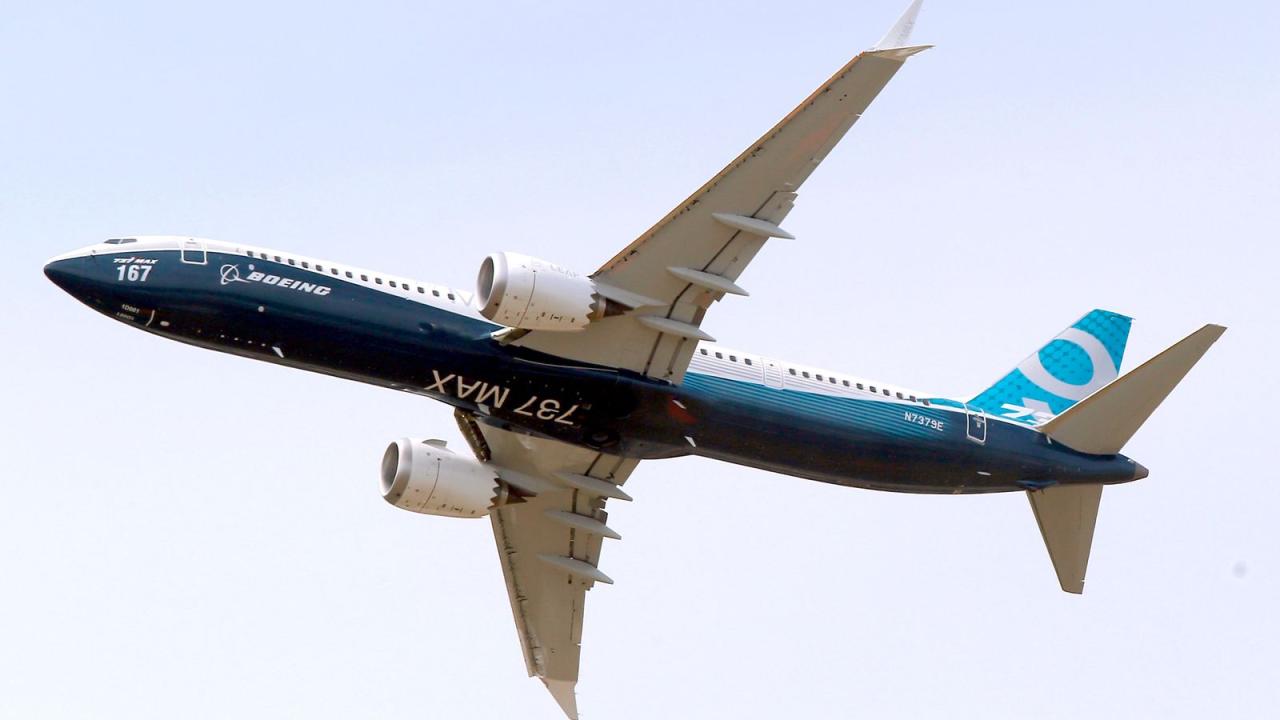
Boeings 737 Max Crisis: Deliveries, Stocks, and the Future
Boeings trouble with 737 planes what it means for deliveries and stocks – Boeing’s trouble with 737 planes what it means for deliveries and stocks has been a tumultuous saga, sending shockwaves through the aviation industry and beyond. The grounding of the 737 Max aircraft following two fatal crashes sparked a crisis that continues to impact Boeing’s reputation, financial performance, and future prospects.
This blog delves into the heart of the crisis, exploring the key events, the consequences for Boeing’s delivery schedule and stock prices, and the company’s efforts to regain public trust and restore confidence in the 737 Max.
The 737 Max crisis has been a complex and multifaceted event, raising serious questions about safety, regulation, and corporate accountability. This blog aims to provide a comprehensive overview of the situation, examining the impact on Boeing’s business and the challenges it faces in moving forward.
We’ll analyze the regulatory hurdles Boeing has faced in getting the 737 Max recertified, the impact on delivery delays and the backlog of orders, and the volatility in Boeing’s stock price as investors grapple with the implications of the crisis.
Boeing’s 737 Max Crisis

The Boeing 737 Max crisis was a period of intense scrutiny and upheaval for the aviation giant, stemming from two fatal crashes of the 737 Max aircraft within a span of five months in 2018 and 2019. These tragedies, involving Lion Air Flight 610 and Ethiopian Airlines Flight 302, resulted in the grounding of the 737 Max fleet globally, marking a pivotal moment in Boeing’s history.
The 737 Max Grounding: Key Events
The grounding of the 737 Max aircraft was a direct consequence of the two fatal crashes, raising serious concerns about the aircraft’s safety and the effectiveness of Boeing’s design and safety protocols. The investigations into both accidents pointed to a malfunctioning flight control system known as the Maneuvering Characteristics Augmentation System (MCAS).
- Lion Air Flight 610 Crash (October 29, 2018):The Lion Air flight crashed into the Java Sea shortly after takeoff from Jakarta, Indonesia, killing all 189 people on board. The investigation concluded that a faulty sensor reading triggered the MCAS system, causing the aircraft to repeatedly nosedive.
The pilots struggled to regain control, ultimately leading to the crash.
- Ethiopian Airlines Flight 302 Crash (March 10, 2019):Ethiopian Airlines Flight 302 crashed shortly after takeoff from Addis Ababa, Ethiopia, killing all 157 people on board. The investigation revealed similar issues to the Lion Air crash, with the MCAS system again playing a central role in the accident.
- Global Grounding (March 13, 2019):Following the Ethiopian Airlines crash, regulatory authorities around the world grounded the 737 Max fleet, citing safety concerns and the need for a thorough investigation.
Impact on Boeing’s Reputation and Financial Performance
The 737 Max crisis had a devastating impact on Boeing’s reputation, significantly eroding public trust in the company. The crashes and subsequent grounding led to intense public scrutiny, media coverage, and legal battles, casting a shadow over Boeing’s once-unblemished safety record.
The company faced widespread criticism for its handling of the crisis, including allegations of misleading regulators and prioritizing profits over safety. The grounding also had a significant financial impact on Boeing. The company’s production of the 737 Max was halted, leading to a backlog of undelivered aircraft and a substantial drop in revenue.
Boeing’s stock price plummeted, and the company incurred billions of dollars in costs related to the crisis, including compensation to airlines, legal settlements, and redesigning the MCAS system.
Regulatory Challenges in Recertifying the 737 Max
Getting the 737 Max recertified by aviation regulators was a complex and lengthy process. Boeing faced intense scrutiny from the Federal Aviation Administration (FAA) and other international aviation authorities. The FAA required Boeing to make significant changes to the aircraft’s design and software, including:
- MCAS Redesign:The FAA mandated that Boeing redesign the MCAS system to make it more reliable and less prone to errors. The new system was designed to rely on multiple sensors and provide pilots with more control over the aircraft.
Boeing’s recent troubles with the 737 Max have sent shockwaves through the aviation industry, impacting both deliveries and stock prices. The company faces significant challenges in regaining trust and ensuring the safety of its aircraft. Meanwhile, the US government is taking a hard line against the sale of hazardous products, recently taking legal action against eBay for its alleged role in facilitating such sales.
This focus on safety and accountability underscores the importance of robust oversight in all industries, including aviation, where consumer safety is paramount.
- Pilot Training:The FAA required Boeing to implement new pilot training programs, focusing on the operation of the MCAS system and how to handle potential malfunctions.
- Flight Simulator Updates:Boeing had to update the flight simulators used for 737 Max training to accurately reflect the changes made to the MCAS system.
- Extensive Testing:Boeing was required to conduct extensive flight tests and simulations to demonstrate the effectiveness of the redesigned MCAS system and the new pilot training programs.
Delivery Delays and Backlog

The grounding of the 737 Max aircraft in 2019, following two fatal crashes, had a significant impact on Boeing’s delivery schedule. The grounding led to a halt in production and deliveries, creating a backlog of orders that Boeing has been working to clear ever since.The 737 Max crisis had a profound impact on Boeing’s ability to deliver aircraft to its customers.
The grounding of the aircraft, which lasted for 20 months, resulted in a significant disruption to Boeing’s production schedule and delivery timelines. This disruption created a backlog of orders that has taken Boeing years to address.
Boeing’s Backlog and its Implications
The backlog of 737 Max orders has been a significant challenge for Boeing. As of the end of 2022, Boeing had a backlog of over 4,000 737 Max orders. This backlog represents a significant amount of potential revenue for Boeing, but it also represents a significant challenge in terms of meeting customer expectations and managing production.The backlog has several implications for Boeing’s future deliveries.
First, it will take Boeing several years to clear the backlog, even with increased production rates. This means that Boeing’s customers will have to wait longer than they initially anticipated to receive their aircraft. Second, the backlog has put pressure on Boeing to increase production rates, which has led to concerns about quality control and safety.
Third, the backlog has made Boeing more vulnerable to delays and disruptions, such as those caused by supply chain issues or labor shortages.
Boeing’s ongoing struggles with the 737 Max have sent shockwaves through the aviation industry, impacting both deliveries and stock prices. While the company works to regain trust and address safety concerns, investors are closely watching its progress. This turbulent landscape is mirrored on Wall Street, where positive US economic data is driving treasury yields up, leading to mixed performance across various sectors.
Ultimately, the future of Boeing hinges on its ability to regain the confidence of airlines and the public, a task that will require significant effort and time.
Addressing the Backlog and Delays
Boeing has taken several steps to address the backlog and minimize delays. These steps include:
- Increasing production rates: Boeing has been working to increase production rates of the 737 Max to meet the backlog of orders. The company has also been working to streamline its production process to improve efficiency.
- Prioritizing deliveries: Boeing has been prioritizing deliveries to customers who have been waiting the longest for their aircraft. The company has also been working to ensure that deliveries are made on time and to the agreed-upon specifications.
- Working with suppliers: Boeing has been working closely with its suppliers to ensure that they can meet the increased demand for parts and materials. The company has also been working to diversify its supply chain to reduce its reliance on any single supplier.
- Addressing quality control concerns: Boeing has been taking steps to address concerns about quality control and safety. The company has been working to improve its inspection processes and to ensure that its aircraft meet the highest safety standards.
Despite these efforts, Boeing still faces challenges in clearing the backlog of 737 Max orders. The company has faced delays due to supply chain issues, labor shortages, and other unforeseen circumstances. These delays have caused frustration among Boeing’s customers and have impacted the company’s financial performance.
Boeing’s recent troubles with the 737 Max have sent shockwaves through the aviation industry, impacting both deliveries and stock prices. This uncertainty, coupled with the global economic outlook, adds another layer of complexity to the situation. The oil market, for instance, is facing its own set of challenges, as the Federal Reserve’s rate hikes and tightening supply are creating a volatile environment.
With so much volatility in the market, it remains to be seen how Boeing will navigate this difficult period and what the long-term impact will be on its operations.
“The backlog of 737 Max orders is a significant challenge for Boeing, but the company is working to address it. Boeing is increasing production rates, prioritizing deliveries, working with suppliers, and addressing quality control concerns. However, the company still faces challenges in clearing the backlog and meeting customer expectations.”
Stock Performance
The 737 Max crisis had a significant impact on Boeing’s stock price, causing substantial fluctuations. Understanding these fluctuations requires examining the key factors that influenced investor sentiment and the company’s efforts to recover from the crisis.
Stock Price Fluctuations
The grounding of the 737 Max in March 2019 sent shockwaves through the aviation industry, and Boeing’s stock price reflected this uncertainty. * Initial Drop:Following the grounding, Boeing’s stock price plummeted, dropping by over 50% from its peak in early 2019.
This decline was driven by concerns about the safety of the aircraft, potential regulatory delays, and the financial impact of production halts and delivery delays.
Recovery Attempts
As Boeing worked to address the safety issues and secure regulatory approval for the 737 Max’s return to service, its stock price showed signs of recovery. However, these gains were often short-lived, as new challenges emerged, such as production delays and legal investigations.
Re-certification and Volatility
The re-certification of the 737 Max in late 2019 and early 2020 led to a temporary surge in Boeing’s stock price. However, the ongoing COVID-19 pandemic, which significantly impacted the airline industry and reduced demand for new aircraft, introduced further volatility.
Long-Term Trend
Since the 737 Max’s return to service, Boeing’s stock price has generally trended upwards, but it remains significantly below its pre-crisis levels. This reflects the ongoing challenges the company faces, including regaining customer confidence, addressing the backlog of undelivered aircraft, and navigating the competitive landscape.
Factors Influencing Stock Price
The fluctuations in Boeing’s stock price were influenced by a combination of factors, including:* Safety Concerns:The primary driver of the initial stock price decline was the public’s perception of the 737 Max’s safety, fueled by the two fatal crashes.
Regulatory Delays
The length of time it took for the 737 Max to be re-certified by global aviation authorities contributed to uncertainty and weighed on the stock price.
Financial Impact
The production halts, delivery delays, and compensation claims related to the 737 Max crisis significantly impacted Boeing’s financial performance, leading to investor concerns.
Customer Confidence
Regaining customer confidence in the 737 Max was crucial for Boeing’s recovery. Delays in the return to service and ongoing investigations impacted the company’s reputation and ability to secure new orders.
Competitive Landscape
The 737 Max crisis provided opportunities for Boeing’s competitors, such as Airbus, to gain market share. This intensified competition added pressure on Boeing’s stock price.
Investor Sentiment
Investor sentiment towards Boeing has been volatile since the 737 Max crisis. * Initial Skepticism:The initial grounding of the 737 Max led to widespread skepticism among investors, who questioned Boeing’s ability to effectively address the safety issues and regain public trust.
Cautious Optimism
As Boeing made progress in addressing the safety concerns and securing regulatory approval, investor sentiment began to shift towards cautious optimism. However, this optimism was often tempered by concerns about the long-term financial impact of the crisis.
Mixed Signals
The return to service of the 737 Max was met with mixed signals from investors. While some saw it as a sign of recovery, others remained wary about the company’s long-term prospects, given the ongoing investigations and potential legal liabilities.
Long-Term Outlook
Investor sentiment towards Boeing is likely to remain mixed in the coming years, as the company continues to navigate the challenges of recovering from the 737 Max crisis and adapting to the evolving aviation industry.
Boeing’s Response and Recovery Efforts: Boeings Trouble With 737 Planes What It Means For Deliveries And Stocks
The grounding of the 737 Max in 2019 forced Boeing to confront a crisis that threatened its reputation and financial stability. The company responded with a multi-pronged approach aimed at addressing the safety concerns, regaining public trust, and restoring the aircraft’s certification.
Safety Enhancements and Design Changes
Boeing implemented significant changes to the 737 Max to address the safety concerns that led to the two fatal crashes. These changes focused on enhancing the aircraft’s flight control system, pilot training, and maintenance procedures.
- MCAS Redesign:The Maneuvering Characteristics Augmentation System (MCAS), the flight control system at the heart of the crashes, was redesigned to make it more reliable and less susceptible to erroneous inputs. The system was made less sensitive to angle-of-attack sensor readings, and its activation was limited to a single angle-of-attack sensor.
This ensures that the system relies on multiple sensors for input, reducing the risk of a single faulty sensor causing an issue.
- Enhanced Pilot Training:Boeing developed a new pilot training curriculum that included extensive training on the 737 Max’s flight control systems, including MCAS. This curriculum focused on teaching pilots how to recognize and respond to potential MCAS-related situations. This training ensured pilots were fully aware of the system’s capabilities and limitations and how to effectively manage it during flight.
- Software Updates:Boeing implemented software updates to the 737 Max’s flight control system, including MCAS. These updates addressed issues with the system’s logic and functionality, making it more robust and reliable. This included adding safeguards to prevent the system from engaging in inappropriate situations and ensuring that pilots had more control over its operation.
The software updates aimed to prevent the system from overriding pilot commands and ensure that the aircraft remained under the pilot’s control at all times.
- Improved Maintenance Procedures:Boeing revised its maintenance procedures for the 737 Max, emphasizing the importance of regular inspections and maintenance of the aircraft’s flight control systems. This included adding new inspection requirements for the angle-of-attack sensors and the MCAS system. These procedures aimed to identify and address any potential issues with the aircraft’s systems before they could lead to a safety hazard.
Future Outlook
The 737 Max crisis has undoubtedly left a significant mark on Boeing, raising concerns about the long-term impact on its business. While the aircraft has returned to service, the challenges of regaining trust, rebuilding market share, and managing the financial fallout remain.
However, opportunities exist for Boeing to capitalize on the recovery of the 737 Max program and reassert its position as a global aerospace leader.
Long-Term Impact on Boeing’s Business
The 737 Max crisis has had a profound impact on Boeing’s business, affecting its financial performance, reputation, and relationships with airlines and regulators. The grounding of the aircraft led to significant production delays, delivery disruptions, and financial losses. The company faced substantial legal and regulatory scrutiny, resulting in fines and settlements.
Moreover, the crisis eroded public trust in Boeing, impacting its brand image and customer confidence.
Challenges in Regaining Market Share and Competing with Rivals, Boeings trouble with 737 planes what it means for deliveries and stocks
Boeing faces a number of challenges in regaining market share and competing with rivals. The 737 Max crisis has created an opportunity for Airbus to solidify its position as the leading commercial aircraft manufacturer. Airbus has successfully capitalized on the 737 Max’s absence by securing orders and delivering aircraft to airlines around the world.
Boeing must now work hard to regain the trust of airlines and convince them that the 737 Max is a safe and reliable aircraft.
Opportunities for Boeing to Capitalize on the Recovery of the 737 Max Program
Despite the challenges, Boeing has opportunities to capitalize on the recovery of the 737 Max program. The aircraft is a popular and efficient model, and airlines are eager to resume operations with the 737 Max. Boeing can leverage this demand by focusing on improving production efficiency, delivering aircraft on time, and providing excellent customer support.
The company can also invest in research and development to enhance the 737 Max’s capabilities and maintain its competitive edge.






